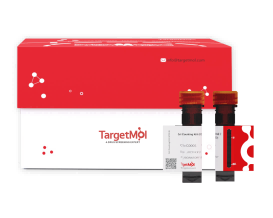 Your shopping cart is currently empty
Your shopping cart is currently empty


DAPI Staining Solution
| Pack Size | Price | USA Warehouse | Global Warehouse | Quantity |
|---|---|---|---|---|
| 1 mL | $61 | - | In Stock |
 Product Information
Product Information
| DAPI Staining Solution | Specifications |
|---|---|
| Ingredient | DAPI Dihydrochloride |
| CAS | 28718-90-3 |
| Conc. | 1 mg/mL |
| Solvent | ddH2O |
 Features
Features
1.High sensitivity: the staining sensitivity for double-stranded DNA is several times higher than that of ethidium bromide.
2.Strong nuclear specificity: exhibits significantly higher affinity for DNA than RNA, with minimal RNA background interference.
3.Stable fluorescence: the fluorescent signal remains detectable for several days after staining.
4.Good compatibility: can be co-stained with multiple fluorescent probes.
5.Easy operation & rapid detection.
 Application
Application
-
Observation of nuclear morphology;
-
Cell cycle analysis;
-
Cell counting and localization;
-
Chromosome banding and karyotype analysis;
-
Fluorescence in situ hybridization (FISH) experiment.
 Preparation of Working Solution
Preparation of Working Solution
Dilute the DAPI stock solution with PBS to prepare a DAPI working solution at 0.5-10 μg/mL (protect from light).
 Instructions
Instructions
Staining of Adherent Cells
(1)Remove the old culture medium and wash the cells with PBS three times, 3 minutes each.
(2)Add 4% paraformaldehyde and fix at room temperature for 10 minutes. After fixation, wash the cells with PBS three times, 3 minutes each.
(3)Add 0.1% Triton X-100 (prepared in PBS) and permeabilize for 5-10 minutes. Wash the cells with PBS three times, 3 minutes each.
(4)If immunofluorescence staining is required, perform blocking and antibody incubation first, followed by DAPI staining. If no additional staining is needed, proceed directly with DAPI staining.
(5)Add DAPI working solution and incubate at room temperature in the dark for 5-15 minutes. Wash with PBS three times, 3 minutes each.
(6)Add an appropriate amount of antifade mounting medium onto a slide, place the coverslip with the cell side facing down on the medium, and seal the edges with mounting medium.
(7)Observe and record images under a fluorescence microscope. Excitation=340 nm, Emission=488 nm.
Staining of Suspension Cells
(1)Centrifuge the cell suspension at 1000 rpm, 4 °C for 5 minutes, and discard the supernatant. Resuspend the cells in PBS, centrifuge again at 1000 rpm, 4 °C for 5 minutes, and discard the supernatant. Repeat the PBS wash once more.
(2)Add 4% paraformaldehyde and fix at room temperature in the dark for 15-20 minutes. After fixation, centrifuge at 1000 rpm, 4 °C for 5 minutes, discard the supernatant, and wash the cells twice with PBS.
(3)Add 0.1% Triton X-100 (prepared in PBS) and permeabilize on ice in the dark for 10-20 minites. Centrifuge at 1000 rpm, 4 °C for 5 minutes, discard the supernatant, and wash once with PBS containing 0.1% Triton X-100.
(4)If performing immunofluorescence staining, proceed with blocking and antibody incubation before DAPI staining. If no other staining is needed, proceed directly to DAPI staining.
(5)Add DAPI working solution and incubate at room temperature in the dark for 10-15 minutes. Centrifuge at 1000 rpm, 4 °C for 5 minutes, discard the supernatant, and wash once with PBS.
(6)Resuspend in PBS for flow cytometry analysis or prepare cell smears for fluorescence microscopy observation. Excitation=340 nm, Emission=488 nm.
 Storage
Storage
Store at –20 °C, protected from light for 12 months.
 Precautions
Precautions
1.DAPI is light-sensitive and easily decomposes; the staining process and post-staining handling must be carried out entirely in the dark.
2.Different cell types and tissue samples have varying sensitivities to DAPI. It is recommended to determine the optimal staining concentration and time through preliminary experiments to avoid excessive background or insufficient staining.
3.Fluorescence quenching may occur. Observe and record as soon as possible after mounting. Keep samples at 4°C in the dark for storage (fluorescence will gradually fade).
4.It is recommended to include an unstained control to rule out non-specific fluorescence interference.
5.DAPI is toxic to some extent. Gloves should be worn during handling to avoid contact with skin and mucous membranes, and waste solutions should be treated as toxic waste.
6.The product is for R&D use only, not for diagnostic procedures, food, drug, household or other uses.
7.Please wear a lab coat and disposable gloves.
 Instruction Manual
Instruction Manual
| Size | Quantity | Unit Price | Amount | Operation |
|---|

Copyright © 2015-2025 TargetMol Chemicals Inc. All Rights Reserved.



